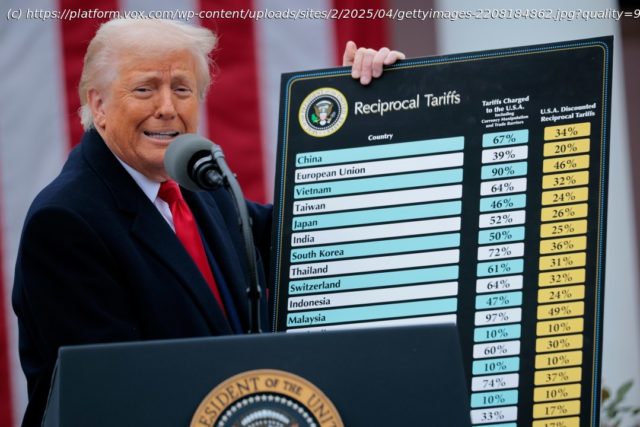Don’t judge tariffs on how Trump is using them.
Editor’s note, August 7, 10:30 am ET: On August 7, Trump’s tariffs went into effect for more than 90 countries. The story below was originally published on April 2.
Since President Donald Trump announced a slate of new tariffs on about 90 countries last week, global financial markets have tumbled. False reports about a potential pause in tariffs gave Wall Street a brief moment of false hope on Monday, but the White House has only doubled down, threatening to add more tariffs on China. Economists have also raised the alarm, projecting that Trump’s tariffs have increased the odds of a recession.
This is just the latest update to tariff policies that have already caused a good deal of whiplash since Trump took office in January. He threatened to impose tariffs on Colombia and canceled his plan to do so all in a single day. He rolled out a tariff plan for Canada and Mexico, only to postpone implementing it shortly after some tariffs went into effect. And he’s been threatening both allies and adversaries with broad and aggressive tariffs for reasons ranging from cracking down on fentanyl to closing a TikTok deal.
To be clear, Trump’s tariff proposals are bad policy: They are far too broad, haphazard, and have confusing rationales.
But tariffs are not fundamentally unwise. “ The reality is that tariffs can be, and have been, effective policy tools for promoting industrial development when they’re done in a targeted strategic way and when they are matched with other complementary policies,” said Adam Hersh, a senior economist at the Economic Policy Institute.
So what would good tariff policies actually look like?When tariffs can be good
A tariff is a tax that’s imposed on goods imported from other countries. Oftentimes, the cost is passed on to consumers because companies will raise their prices to offset the tax.
One of the biggest reasons countries would be interested in levying a tariff is to protect domestic industries from unfair competition. Take the example of Chinese steel. China, which heavily subsidizes its steel industry, produces more than half of the world’s steel. Because demand for steel within China has not kept pace with supply, Chinese steel has become much cheaper, potentially selling at a loss in international markets.
That makes it extremely difficult for steel manufacturers elsewhere to compete, which has prompted governments to respond. Last year, the Biden administration implemented tariffs aimed at curbing imports of Chinese steel in order to protect US manufacturers.
Another example of unfair competition comes from countries with bad labor standards and very low wages.






